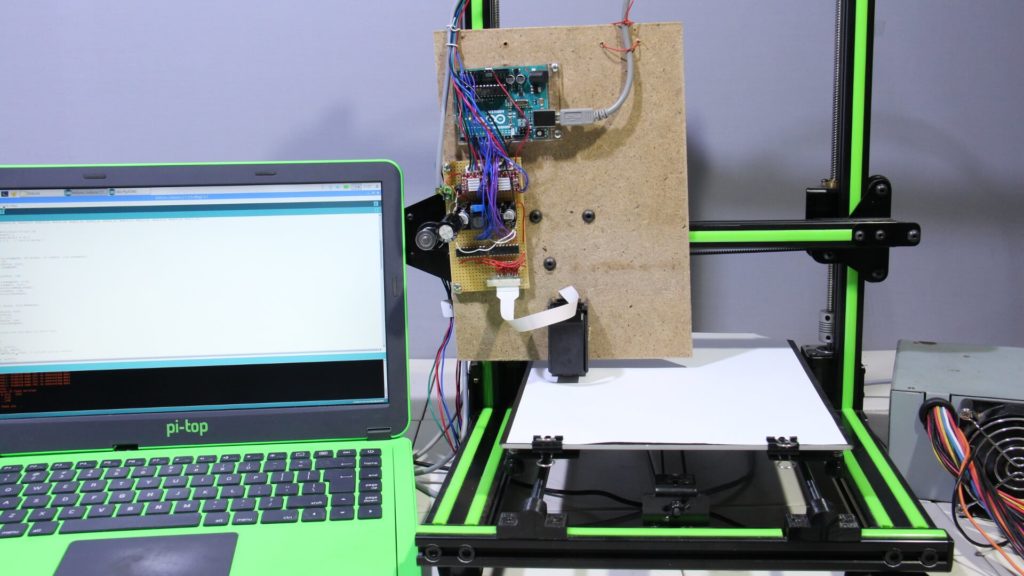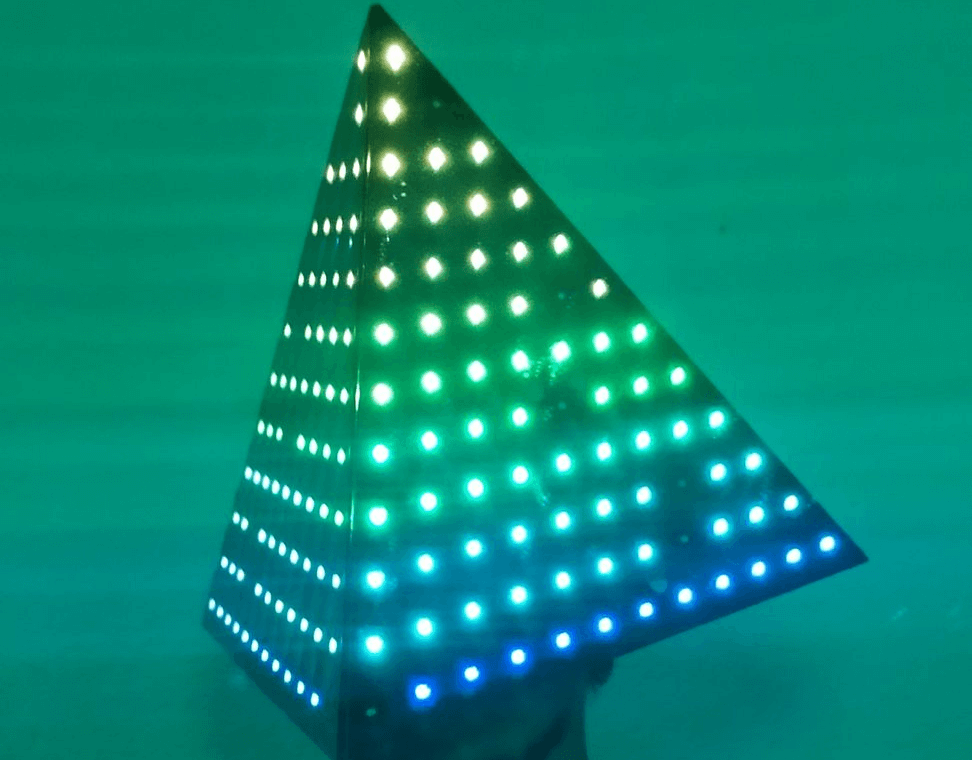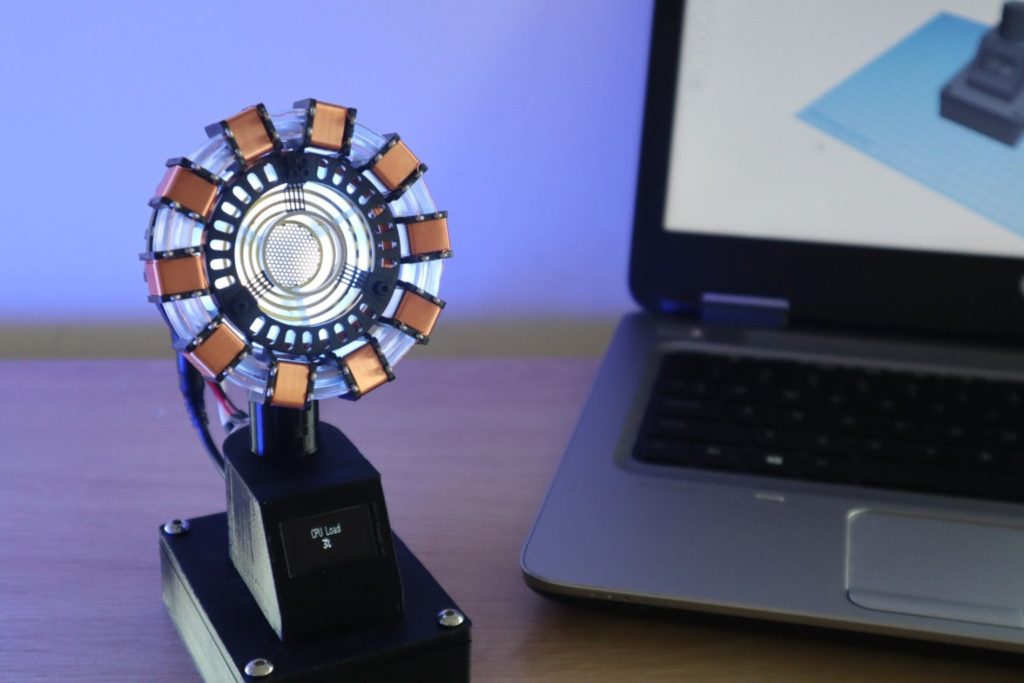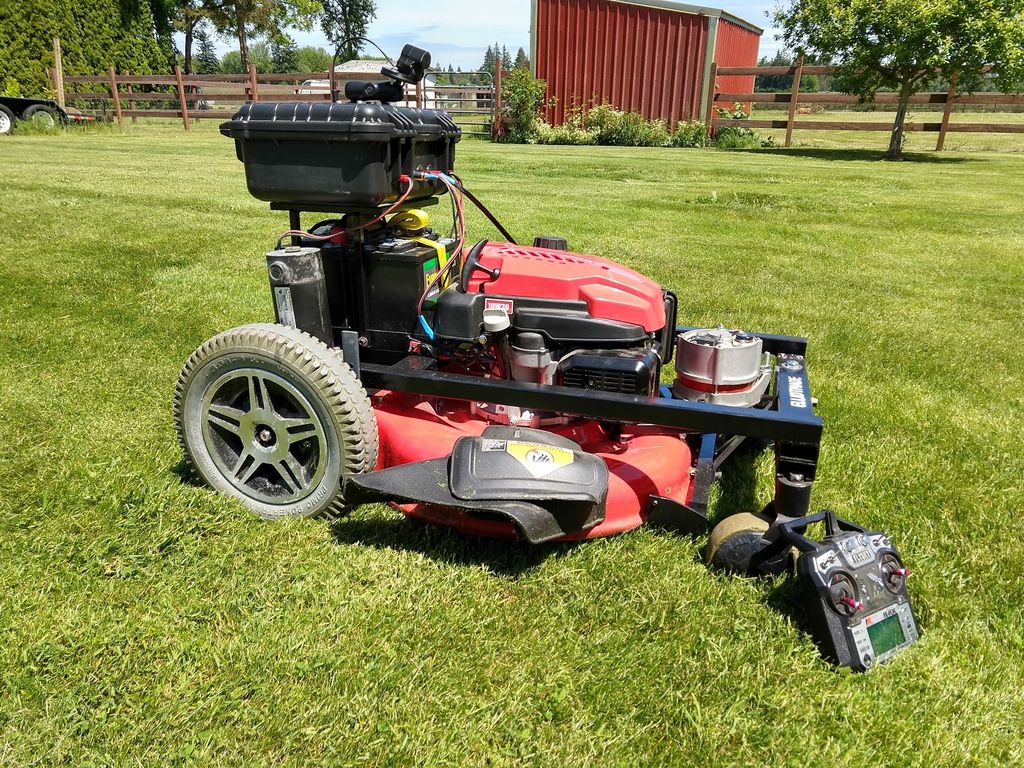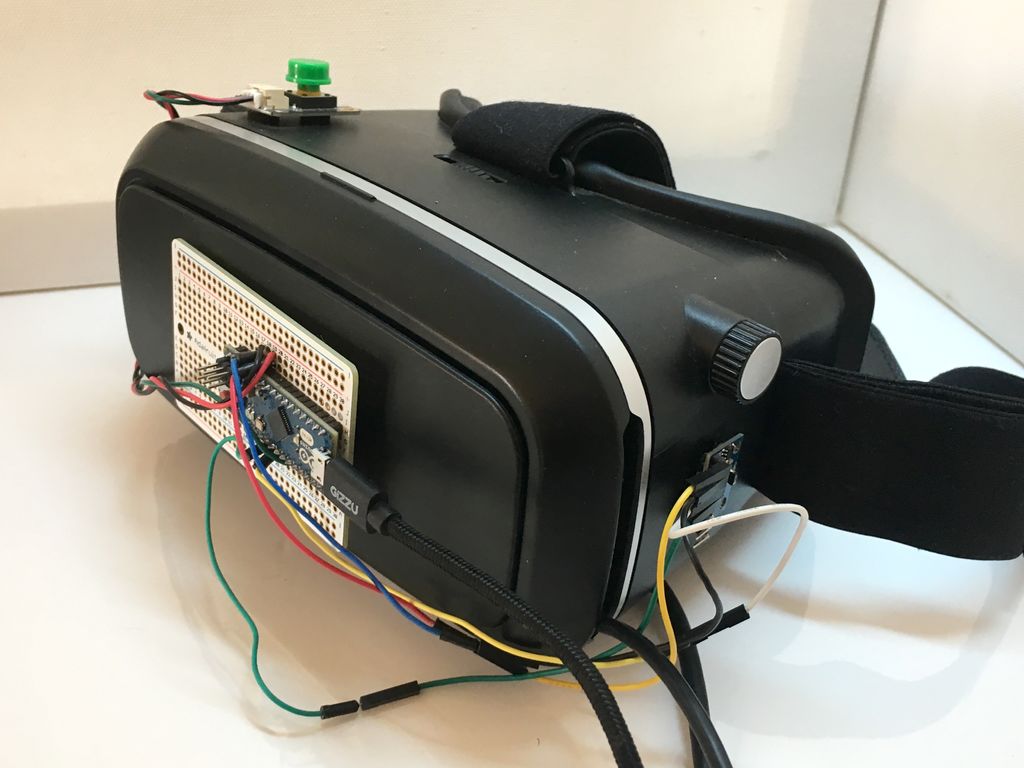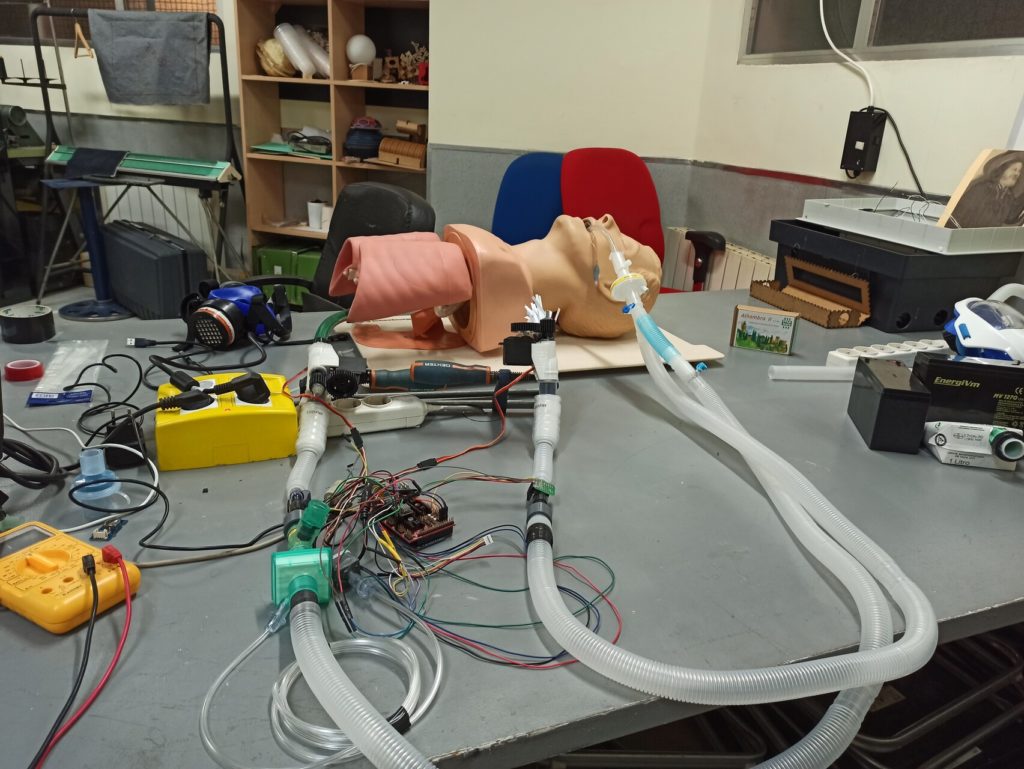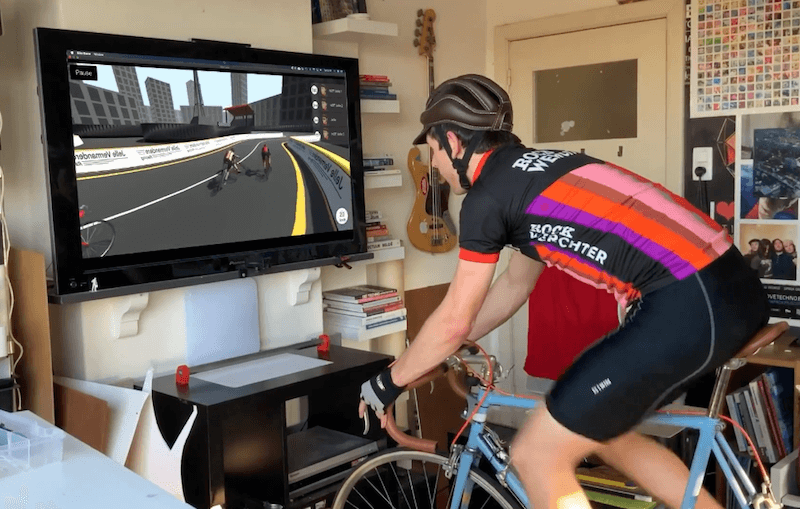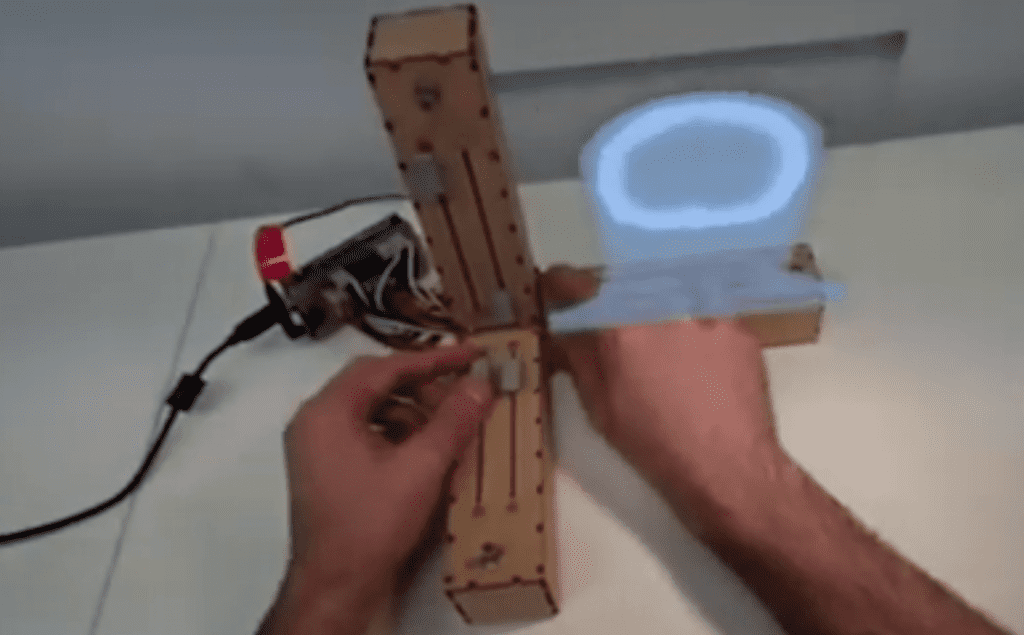Schlagwort: arduino
-

Arduino-based inkjet printer slowly but surely gets the job done
Reading Time: 2 minutesArduino-based inkjet printer slowly but surely gets the job done Arduino Team — June 16th, 2020 As a prototype for a continuously printing art project, Norbert (AKA “HomoFaciens”) has built an inkjet printer that uses an Arduino and the mechanics of a discarded 3D printer to slowly generate black and white images. The…
-

Stare up at your own ceiling starscape
Reading Time: 2 minutesStare up at your own ceiling starscape Arduino Team — June 15th, 2020 Have you ever looked up at your ceiling and wondered how to make it a bit more interesting? Well, creator Centas has and decided to bring a piece of the galaxy into his room using a fiber optic star display.…
-

Stuffed animal gets its own music/AV box
Reading Time: < 1 minuteStuffed animal gets its own music/AV box Arduino Team — June 14th, 2020 Er13k was inspired to create an Arduino music box to go along with his girlfriend’s giant stuffed dog Tobias. This eventually morphed into something that not only plays songs on its own speaker, but also lights up a…
-

This Mad-Eye relies on Arduino, not magic
Reading Time: 2 minutesThis Mad-Eye relies on Arduino, not magic Arduino Team — June 14th, 2020 In the Harry Potter series, professor Alastor Moody is known for wearing a very distinct prosthetic eyeball that moves in a “mad” manner. When Instructables member replayreb’s son decided to go to a costume party dressed as this character,…
-

This magnetic board emits light and sound as a marble moves
Reading Time: 2 minutesAndrei Erdei recently designed an amazing Arduino-powered light board, which glows and plays sounds based on the movement of a magnetic marble. First, the magnet is placed on top and then made to roll by lifting the device’s sides. An array of 36 reed switches underneath the smoked plexiglass surface detect the marble’s…
-

A DIY Deichkind-inspired tetrahedral LED hat
Reading Time: < 1 minuteA DIY Deichkind-inspired tetrahedral LED hat Arduino Team — June 11th, 2020 After mechanical engineer “Kuchbert” saw the hip-hop/electropunk band Deichkind perform — wearing LED-embedded tetrahedral hats, no less — he decided he wanted his own glowing geometric headpiece. Now, nearly 10 years and several shows later, he finally got his…
-

No string attaches this tin can telephone
Reading Time: < 1 minuteNo string attaches this tin can telephone Arduino Team — June 9th, 2020 Geoff (AKA Facio Ergo Sum) has created a new take on the classic “tin can telephone,” using an Arduino and nRF24L01 transceiver to pass audio signals instead of a physical string. The build and testing process are outlined in…
-

Distract yourself with a desktop air dancer!
Reading Time: < 1 minuteDistract yourself with a desktop air dancer! Arduino Team — June 9th, 2020 If you’ve ever seen a gigantic air dancer on the side of the road and thought you might want one of your own, Davide Marin shows how to create a desktop version here. The flailing figure is constructed out…
-

Measure voltage and current with the Tiny V/A Meter
Reading Time: 2 minutesMeasure voltage and current with the Tiny V/A Meter Arduino Team — June 3rd, 2020 Measuring voltage with a multimeter is easy enough, and current is a bit harder, but reading both values simultaneously can be a challenge. If you’re tired of having to replug or find two meters, then look no…
-

Monitoring CPU usage with an Arc Reactor
Reading Time: 2 minutesMonitoring CPU usage with an Arc Reactor Arduino Team — June 3rd, 2020 Iron Man Arc Reactors have brought joy to makers of all ages, whether as something cool on a movie screen, as a hacked together light assembly, or even a cosplay prop created from a DIY kit. Michael Klements decided…
-

Cut the grass from a distance using an RC lawn mower
Reading Time: 2 minutesCut the grass from a distance using an RC lawn mower Arduino Team — June 3rd, 2020 If you grew up watching Honey I Shrunk the Kids, you may recall the scene with Wayne Szalinski’s remote-controlled lawn mower. Inspired by the 1989 film, “elliotmade” designed a version of his own a few years…
-

Enjoy VR games on your PC with this Arduino-based DIY headset
Reading Time: 2 minutesEnjoy VR games on your PC with this Arduino-based DIY headset Arduino Team — June 2nd, 2020 If you want a virtual reality headset for your computer, but don’t want to dig deep into your pockets, this project by “jamesvdberg” (AKA Killer Robotics) presents a low-cost alternative. Although it won’t pack the capabilities…
-

This Arduino-powered LED matrix mask responds to your voice
Reading Time: < 1 minuteThis Arduino-powered LED matrix mask responds to your voice Arduino Team — June 2nd, 2020 When wearing a face mask nowadays, you can’t show expressions in the same ways that we’re all accustomed to. As a possible solution to this problem, programmer Tyler Glaiel decided to create a custom covering, with…
-

Exploring open-source ventilators: Apollo Ventilator
Reading Time: 4 minutesThis article was written by César Garcia, researcher at La Hora Maker. This week, we will be exploring the Apollo Ventilator in detail! This project emerged at Makespace Madrid two months ago. It was a response to the first news about the expected lack of ventilators in Spain because of COVID-19. Several members…
-

Meet TELEBOT, the terrifying telepresence robot
Reading Time: 2 minutesMeet TELEBOT, the terrifying telepresence robot Arduino Team — June 1st, 2020 The Internet has been perhaps more important than ever to keep us connected these days. Available technology, however, apparently wasn’t good enough for brothers Hunter and Josh Irving, who built their own telepresence robot using parts on-hand during their own…
-

Learn about exoplanet exploration with this Arduino-powered apparatus
Reading Time: < 1 minuteLearn about exoplanet exploration with this Arduino-powered apparatus Arduino Team — May 29th, 2020 How do we know that planets exist outside of our solar system? While too far away to observe directly, with extremely sensitive equipment like the Kepler space telescope it’s possible to detect changes in light as these…
-

Announcing the Touch Less, Do More Challenge
Reading Time: 4 minutes[youtube https://www.youtube.com/watch?v=wkvsczf9h0Q?feature=oembed&w=500&h=281] The COVID-19 pandemic has changed the way we interact with people, things, and the world around us. We’re calling on the community to use an Arduino Nano or MKR board to build solutions that can help us practice better social distancing, improve queue management, or enable touch-free technologies. Stepping out from…
-

GoodBoy is a robot dog that runs on Arduino
Reading Time: < 1 minuteGoodBoy is a robot dog that runs on Arduino Arduino Team — May 27th, 2020 Daniel Hingston wanted to build a four-legged walking robot for several years, and with current coronavirus restrictions he finally got his chance. His 3D-printed robodog, dubbed “GoodBoy,” is reminiscent of a miniature version of Boston Dynamics’ Spot,…
-

This cycling game is controlled by a real bike
Reading Time: < 1 minuteThis cycling game is controlled by a real bike Arduino Team — May 26th, 2020 What is one to do when stuck indoors due to bad weather or other circumstances, without the ability to ride your beloved bicycle? If you’re game designer Jelle Vermandere, you build your own cycling simulator as…
-

Edge Impulse makes TinyML available to millions of Arduino developers
Reading Time: 4 minutesThis post is written by Jan Jongboom and Dominic Pajak. Running machine learning (ML) on microcontrollers is one of the most exciting developments of the past years, allowing small battery-powered devices to detect complex motions, recognize sounds, or find anomalies in sensor data. To make building and deploying these models accessible to…
-

Embodied Axes is an Arduino-powered controller for 3D imagery and data visualizations in AR
Reading Time: 2 minutesEmbodied Axes is an Arduino-powered controller for 3D imagery and data visualizations in AR Arduino Team — May 25th, 2020 Researchers across several universities have developed a controller that provides tangible interaction for 3D augmented reality data spaces. The device is comprised of three orthogonal arms, embodying X, Y, and Z axes…
-

This robot looks like a ball and transforms itself into a quadruped to move
Reading Time: 2 minutesThis robot looks like a ball and transforms itself into a quadruped to move Arduino Team — May 25th, 2020 Gregory Leveque has created an adorable 3D-printed robot that not only walks on four legs, but folds up into a ball when not in use. To accomplish this, the round quadruped utilizes…
